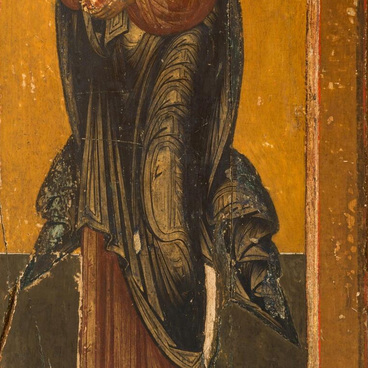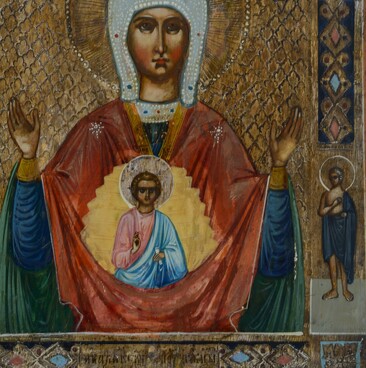John accused the ruler of Galilee, Herod Antipas, of violating the Law when, driven by passion, he divorced his wife and married Herodias, the wife of his half-brother Philip. For this, Herod first had John imprisoned, and then the prophet was killed by his order.
There are different depictions of John the Baptist. In the presented half-length image, in his left hand, John holds a chalice with Christ Child, pointing to Him the finger of his right hand, and a scroll with the words he said: “Behold! The Lamb of God who takes away the sin of the world!” (John 1:29) and “Repent, for the kingdom of heaven is at hand!” (Matthew 3:2) .
The icon is painted in the Old Russian manner. The central part with a background covered in gold paint is framed by similar in tone light ocher fields. Gold is abundantly used to paint the halo and the robe.
The master meticulously worked out all details: with a plethora of thin golden lines, he painted John’s hair and his undergarment — a cilice (a garment made of coarse cloth worn by monks and hermits leading an ascetic life). Gold and dark ocher tones sculpt “iron folds” of his himation draped over the left shoulder.
John’s face is painted in dark shades of brown ocher with minimal use of whitewash. Perhaps the icon painter deliberately created the icon in this way so that it would look “antique”. Or maybe he simply followed the customer’s wishes or used an old icon available at hand as a reference. Old icons darkened with time due to the drying oil with which they were coated. This “dark vision” enhances the icon’s overall emotional effect on the beholder.
A significant part of the icon — the halo and cartouches around the name of the prophet — is decorated with an ornament, some of its elements on the halo are painted in red and green to imitate emeralds and rubies.


